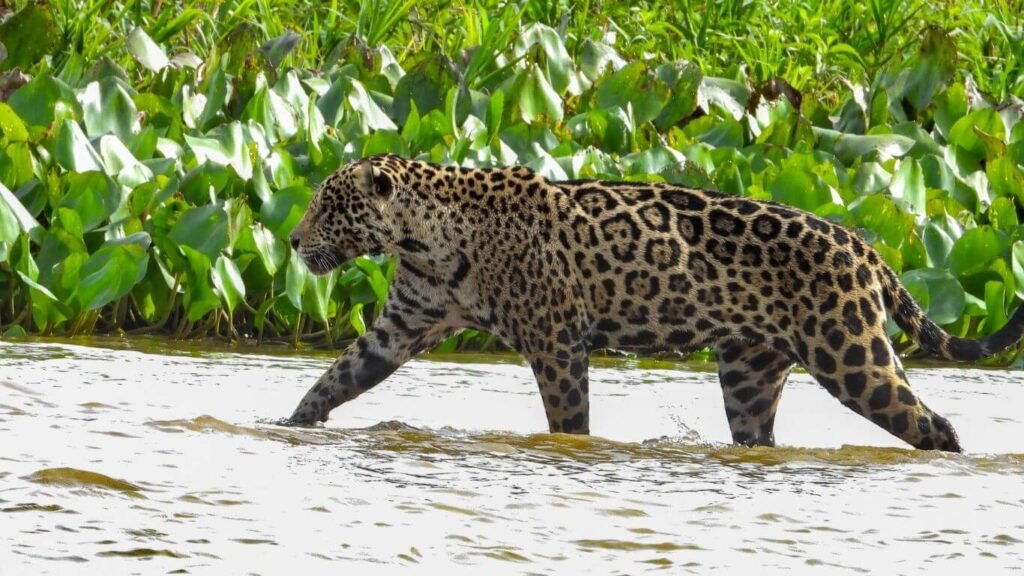The jaguar (Panthera onca) in tourism in the Brazilian Pantanal. The jaguar (Panthera onca) is one of the most iconic felines in Latin America. Its presence in the Brazilian Pantanal is one of the main reasons why this region is so important from a biodiversity standpoint. The Pantanal is the largest wetland plain in the world and is home to a rich variety of fauna and flora. In this ecosystem, the jaguar occupies a prominent place.
1. Jaguar habitat in the Brazilian Pantanal:
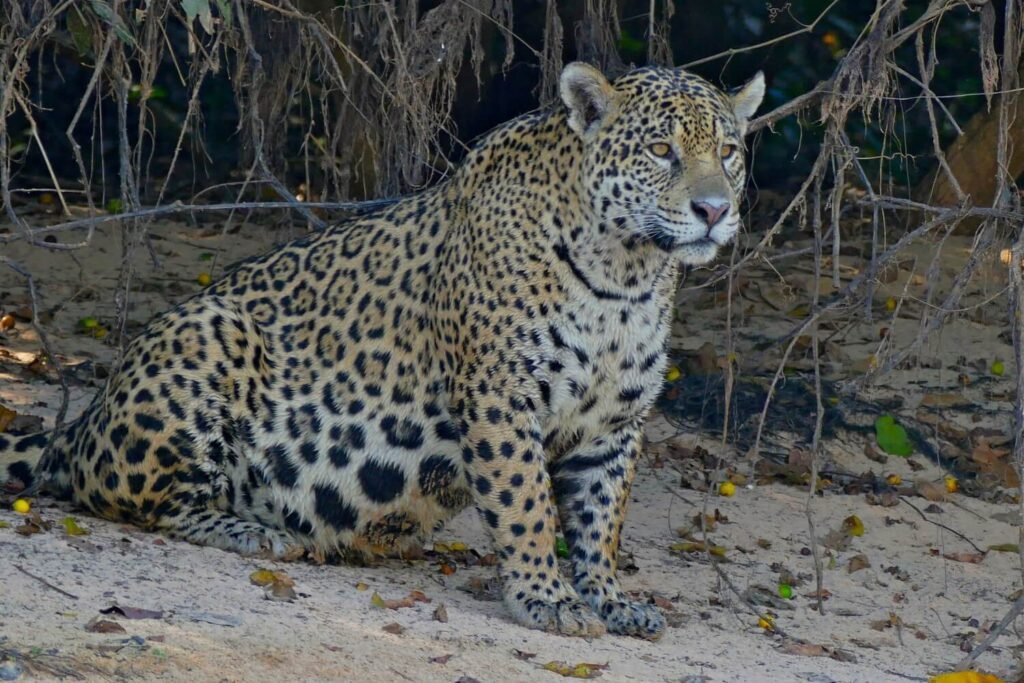
The jaguar inhabits a wide variety of ecosystems, including tropical forests, savannas, and wetlands like the Pantanal. This region is known for its vast wetlands and biodiversity, providing the jaguar with an ideal environment for hunting and reproduction.
- Encontro das Águas National Park: Located in the state of Mato Grosso do Sul, this park is one of the most well-known areas for jaguar sightings.
- Northern Pantanal Conservation Area: This is an extensive wetland region in the northern Pantanal. Its ecosystem includes forests and flooded areas during the rainy season.
- Caiman Wildlife Refuge: In the southern Pantanal, this reserve is a key location for jaguar conservation. It contains grassland and floodplain areas.
- Pantanal Rio Negro State Park: Located in the state of Mato Grosso, this park provides a suitable habitat for jaguars. It includes riparian forests, savannas, and wetlands that support a wide variety of animals.
2. Behavior and diet:
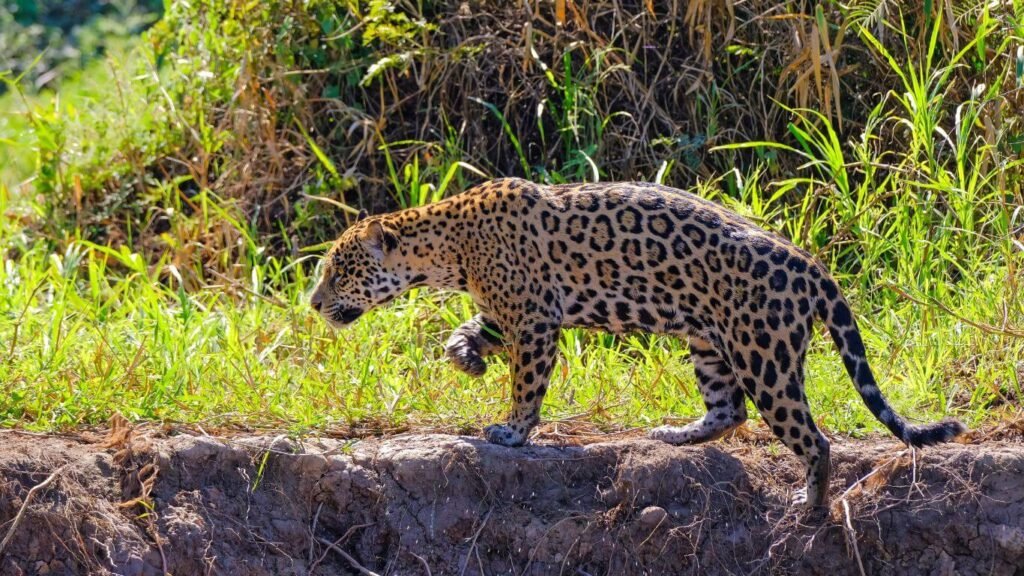
Jaguars are known for their ability to hunt in water, which sets them apart from other felines. Their diet includes aquatic prey such as caimans and fish, as well as terrestrial mammals.
- Water hunting: Pantanal jaguars are known for their ability to hunt in the water. They are excellent swimmers and can stalk their prey from the water, capturing animals such as caimans, fish, and waterbirds.
- Varied diet: Although they hunt aquatic prey, jaguars also feed on a wide range of terrestrial mammals, such as capybaras, peccaries, deer, and armadillos.
- Powerful jaws: Jaguars have an extremely strong bite, capable of breaking bones and hard shells. This allows them to hunt large and difficult prey, such as caimans.
3. Conservation and population of jaguars in the Brazilian Pantanal:
Illegal hunting and habitat destruction have endangered the jaguar, but populations in the Pantanal have shown some stability. This is due to local conservation efforts and the growth of ecotourism. Experts estimate that around 250 jaguars live in the Pantanal, though the number varies depending on the source.
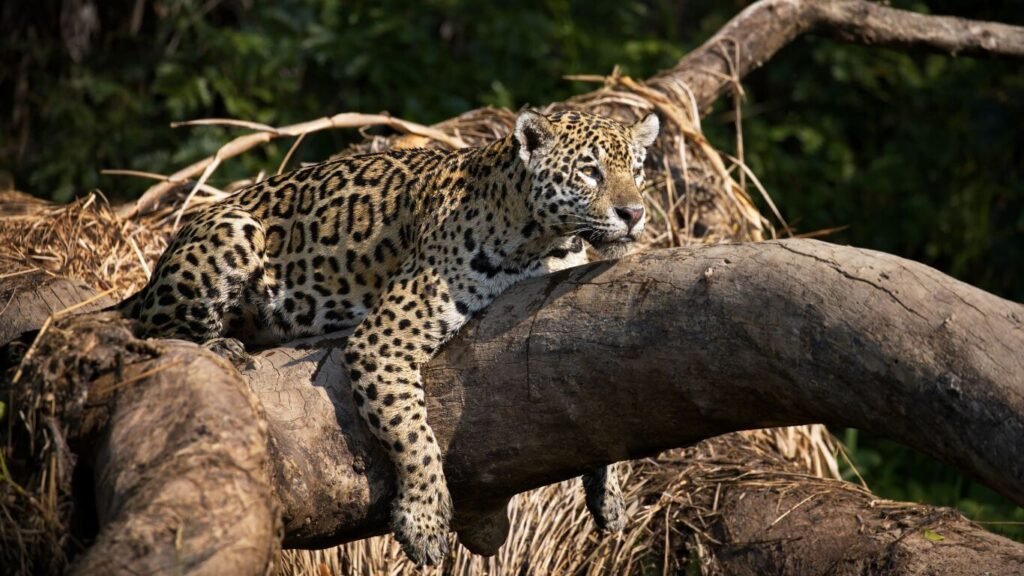
- Protection efforts: In the Pantanal, actions are being taken to protect jaguars. These include monitoring and patrolling efforts aimed at reducing illegal hunting and preventing habitat destruction.
- Ecotourism: The rise of ecotourism has sparked greater interest in protecting jaguars, strengthening the stability of their population.
- Protected areas: The Pantanal has zones where jaguars can live more peacefully and securely, helping to conserve the species.
4. Jaguar watching tourism in the Brazilian Pantanal:
Jaguar-watching tourism has grown significantly in the Pantanal. Tourists who wish to see these felines in their natural habitat gather in specific areas, such as the Encontro das Águas National Park. This activity raises awareness about the importance of conserving these animals and also generates revenue for conservation projects.
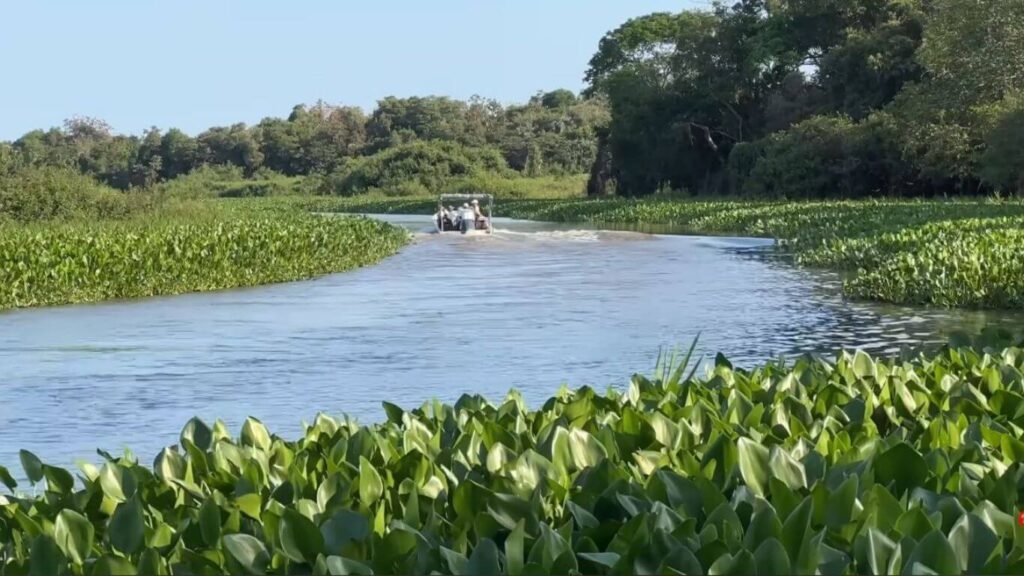
- Tourism growth: Jaguar-watching tourism has experienced a significant increase in the Pantanal. More and more people are interested in seeing these felines in their natural environment.
- Generating revenue for conservation: Tourism generates income that is used to fund conservation projects and protect jaguars and their habitat.
5. Impact of sustainable tourism:
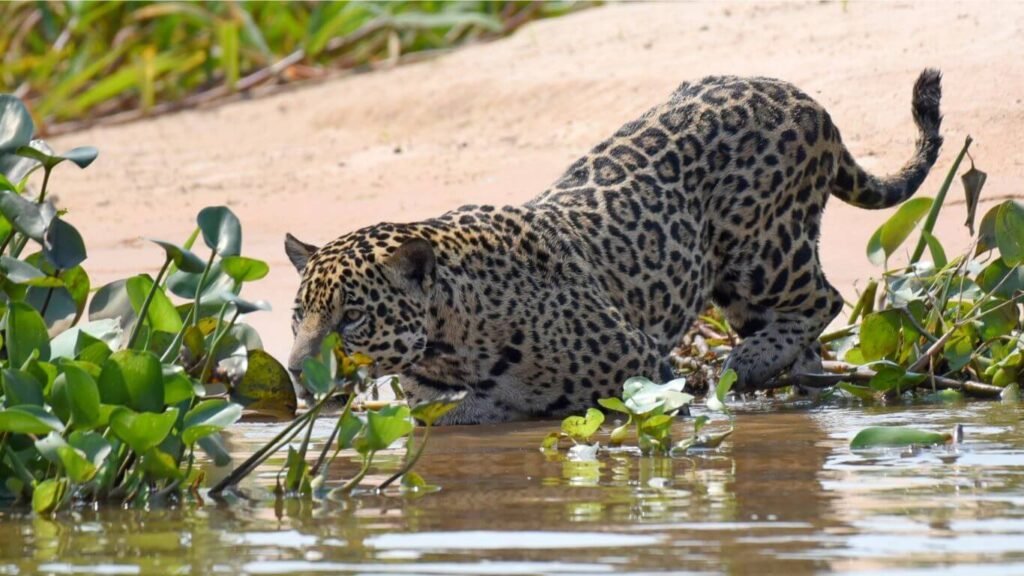
Jaguar-watching tourism has become a key tool for funding the conservation of the Pantanal. Local businesses and environmental organizations are working to ensure that this type of tourism is not only economically beneficial but also environmentally friendly. Trained tour guides and efforts to avoid disturbing the animals are part of the strategies to make tourism sustainable.

